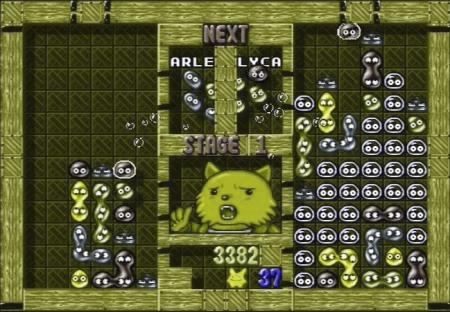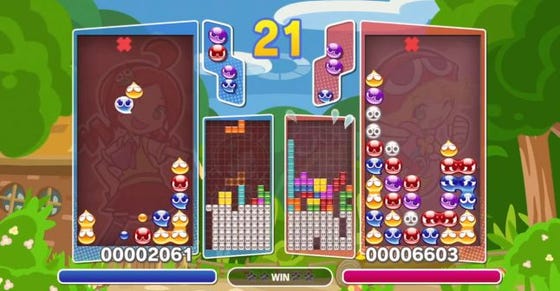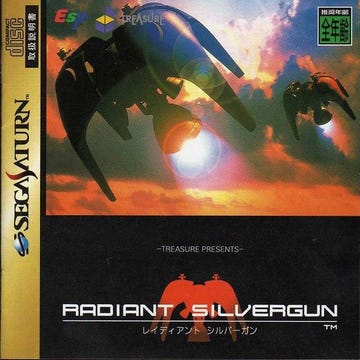
Featured Blog | This community-written post highlights the best of what the game industry has to offer. Read more like it on the Game Developer Blogs.
As a collector of Sega Saturn games, I've noticed that some of my favorite games on the platform would be impossible to play if I were colorblind. I'll pick out a few examples and propose fixes for each.

I love collecting retro video games and I'd call it a hobby but at this point, it's more of an obsession. Currently, the Sega Saturn is my system of choice and I'm buying any game that interests me. I was pleasantly surprised when I discovered most Sega Saturn games have extensive button remapping options since that helps me play all of its great games with my feet. It's great to see classic games with accessibility! However, some Sega Saturn games seem to be lacking in vision accessibility, specifically, colorblindness.
Let me name three specific Sega Saturn games and describe how color affects their gameplay. Then, I'll propose a solution to make each game accessible to those that are colorblind. Additionally, I'll post comparison screenshots of each game with and without a Deuteranopia filter. We've got plenty of games to cover so let's get started!
Puyo Puyo Tsuu

Puyo Puyo Tsuu is a puzzle game released by Compile for the Saturn in 1995. In this game, you match multiple Puyos of the same color together to create devastating combos to defeat your opponent. Western audiences may recognize the gameplay is identical to Dr. Robotnik's Mean Bean Machine and you're right, Puyo Puyo Tsuu is the same game except the graphics are completely different. So how is Puyo Puyo Tsuu inaccessible?


As you can see, different colored Puyos appear to be the same color! In a game about matching Puyos of the same color together to overwhelm your opponent, this makes the game unplayable! How should we fix this problem?
My solution would be to give each Puyo a personality. Unlike most puzzle games, our pieces (in this case, Puyos) have three defining traits: color, shape, and eyes. We could change the colors around but let's try another solution since I'll be getting into a color discussion later. Recall that Puyos are unique puzzle pieces in that they have shape and eyes. So, we could give each Puyo a unique pair of eyes; giving the red Puyos angry eyes and the blue Puyos tired eyes. Then, we could change the shape of each Puyo so they're easier to tell apart. Doing both of these things would not only make the game more accessible but also would give the game more personality. How might this solution look?

That's right, this solution has been implemented into recent games such as Sega's Puyo Puyo Tetris. Personally, I would have defined each Puyo's shape more. Yellow's shape is clearly defined and I'd hope in future installment, the other Puyos also get more unique designs so they're easier to tell apart. Still, this is a step in the right direction.
Radiant Silvergun

Radiant Silvergun is a space shooter released by Treasure for the Saturn in 1998. This game is unique in that throughout the entire game, you can use 7 weapons that are always equipped on your ship. The game also puts an emphasis on its many boss fights, not unlike a previous Treasure game, Alien Soldier. This is also one of my favorite games ever made. If you want to play Radiant Silvergun in the West, I'd highly recommend the excellent Xbox Live Arcade Version. I can also say that if you're colorblind, you'll have no problem getting to the end this game. So what's the issue?


While this game isn't unplayable for those who are colorblind, getting high scores on the leaderboard is impossible. The primary way you raise your score in Radiant Silvergun is by shooting down three enemy ships of the same color, getting a chain bonus. These ships are red, blue, or yellow. But as you can see in the comparison above, the red and yellow ships look the same! If you know space shooters, you know getting to the end of the game is hardly ever the goal, but rather getting the highest score on one credit.
Since each ship has a color and the design of each kind of ship is different, manipulating shape or specific traits of the ship won't cut it. What's my solution? I'd change all red ships to either their blue or yellow counterparts in a new Dual Color mode. Gamers would only need to worry about two colors to chain, so this mode would also be beneficial to those struggling to keep a chain going. We could make separate leaderboards for Dual Color mode, but this would create an unnecessary rift in the playerbase and bloat the amount of leaderboards.
So as insinuated above and for an extra challenge, I'd like colorblind gamers to be on the same leaderboard as everyone else. Some games keep everyone on the same leaderboard by multiplying the final score by difficulty. Using a similar concept, I'd reduce the amount of points each chain bonus gives the player. Chain bonuses would occur more frequently in Dual Color mode (along with Secret Chains being impossible) so it's a matter of making sure the end of the game has the same amount of maximum points in each mode.
When uploading scores to the leaderboard, each entry would be marked Dual Color and could be filtered. This would take some time to implement. The biggest hurdle would be keeping score parity between Dual Color and Regular mode. What's the best solution? Make a separate leaderboard for Dual Color mode or keep its scores with Regular mode? The former is much easier to implement but the latter is more inclusive. Honestly, I can see arguments for either solution, which is why I mentioned both!

Also worth mentioning is that in Treasure's followup space shooter, Ikaruga, they used the concept of dark and light as a key design point for the game. Ikaruga's scoring system depends on chaining multiple black or white enemies in a row. As a result, Ikaruga's scoring system is accessible! I'd highly recommend picking up both games as they're two of my favorite games of all time. Even if you never chase leaderboards, both are a blast to play and offer enough variety in the levels to make repeated playthroughs fun.
Super Puzzle Fighter II X

Super Puzzle Fighter II X (called Super Puzzle Fighter II Turbo in the West) is a puzzle game released by Capcom for the Saturn in 1996 and XBLA/PSN in 2007. In Puzzle Fighter, you face off against your opponent in a battle to match colored gems to send gems to your opponent. Puzzle Fighter is one of the most fast-paced puzzle games around and a blast to watch. Unless you're colorblind.
.jpg/?width=450&auto=webp&quality=80&disable=upscale)

If you're colorblind, Puzzle Fighter is impossible to play. Every gem is a block, with only color being the difference between each gem. I cannot think of a game that'd be more frustrating to play for a colorblind individual. What would I do to make this game more accessible to everyone?
One solution would be to give each gem unique pattern, say, the four suits in a deck of playing cards. This solution is similar to the one I gave Puyo Puyo Tsuu. I do not believe this would be the best solution for Puzzle Fighter. because inn Puzzle Fighter, clusters of gems can create new, larger gems (in a shape of a square or rectangle) with a new texture. A pattern made for a 1x1 block wouldn't scale well to a large 2x8 rectangle. We could remove larger textures and have every gem keep its 1x1 pattern but then the game would lose its interesting visual appeal and would look worse.
What's my solution? Let the player choose their color palette. In a puzzle game, color is the easiest and fastest way to identify a piece. Puzzle Fighter is one of the fastest puzzle games created so to make sure the playing field is even, color should remain a gem's distinct property. This way, colorblind individuals could spot and create combos as quickly as their opposition.
Implementation would also not be difficult. In Puzzle Fighter, there are four colored gems. I do not have access to Puzzle Fighter's source code, but one way gem color could be implemented (on a high level) would be to have each color as its own class containing, among other things, an RGB value. So in our pseudo code, we'd have four gem classes:
public class GemOne { gemOneColor = Color.Rgb(255, 0, 0); } //red default
public class GemTwo { gemTwoColor = Color.Rgb(0, 255, 0); } //green default
public class GemThree { gemThreeColor = Color.Rgb(0, 0, 255); } //blue default
public class GemFour { gemFourColor = Color.Rgb(255, 255, 0); } //yellow default
When a new pair of gems are generated, gem pair properties are pulled from the above classes. To allow the user to generate their own colors, we'd simply add a space in the options menu for users to change the color values for the above classes using a simple RGB GUI. After saving changes, a colorblind user might change their values to this:
public class GemOne { gemOneColor = Color.Rgb(240, 240, 240); } //now white
public class GemTwo { gemTwoColor = Color.Rgb(15, 15, 15); } //now black
public class GemThree { gemThreeColor = Color.Rgb(0, 0, 255); } //blue default
public class GemFour { gemFourColor = Color.Rgb(255, 255, 0); } //yellow default
As you can see above, the user changed the red gem to white and the green gem to black. The great thing about this feature is anyone can use it, so if a non-colorblind user loves blue, they can play a monochromatic version of Puzzle Fighter by making each gem a shade of blue. This basic feature would make Puzzle Fighter playable to a whole new audience!
This past year has been great for game accessibility. Both Microsoft and Sony have added accessibility features to their game systems to make gaming more accessible to everyone. I enjoyed taking a look at games on my Sega Saturn, analyzing their accessibility. I believe the future of game accessibility is bright and we'll see plenty of innovations in the next few years. But for now, I'm going back to the past to fight nightmares by playing NiGHTs into Dreams!

Read more about:
Featured BlogsAbout the Author(s)
You May Also Like









